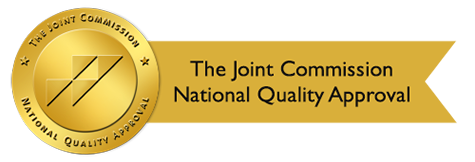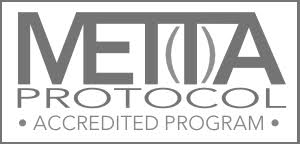You may have begun your alcohol consumption as a social drinker, enjoying sipping a glass of wine or a beer during gatherings. The experience was all good fun, and you were not even drinking every day. However, over time, this casual drinking might lead to more frequent consumption, escalating without notice. This gradual increase in alcohol intake can silently progress to alcohol-induced liver disease.
In this blog, you will learn all about alcohol’s effect on the body, specifically the liver, and the importance of early detection and lifestyle changes.
The Role of Liver in the Body
The liver plays a crucial role in maintaining the body’s overall health by performing a wide range of vital functions. These include detoxifying the bloodstream by removing waste products and foreign substances, regulating blood sugar levels, and producing essential nutrients.
How the Liver Processes Alcohol
Once you drink the liquor, its liquid will enter the stomach and small intestine. There is about 20% of alcohol that goes through the stomach and the remaining 80% is being absorbed by the small intestine. These small blood vessels carry the liquor to the bloodstream. Then, enzymes break it down as the metabolization process of the liver.
The liver can process one standard liquor in an hour. If you drink excessive alcohol, the longer the procedure will take. The unprocessed alcohol by the liver will circulate through the bloodstream. This circulation starts to affect the heart and brain that leads to intoxication.
Alcohol and Liver Damage
According to an article from the World Health Organization’s website, excessive alcohol drinking has been linked to over 200 health problems. There is also an approximately 3 million representing 5.3% death rate globally. Liquor consumption may lead to premature death and disability.
Alcohol drinking can lead to cellular damage in the liver, primarily affecting hepatocytes and parenchymal cells, due to the excessive production of harmful molecules known as free radicals. Among these free radicals, oxygen-containing free radicals known as reactive oxygen species (ROS) are of particular importance in the liver’s vulnerability to damage.
Alcohol-Induced Liver Disease Stages
Fatty Liver
This is the initial phase. Individuals who have it do not show symptoms, although they may experience an enlarged liver or mild discomfort in the upper right part of the abdomen. Good thing, it can be treated if detected early and stop consuming alcohol.
Alcoholic Hepatitis
This is a health condition in which the liver becomes inflamed and swollen due to cell damage. Approximately one-third of people who consume high amounts of liquor are at risk of developing this. The severity of this condition can range from mild to severe.
Cirrhosis
This is a serious and irreversible condition that may lead to permanent liver damage or liver cancer. Approximately 10% to 20% of heavy alcohol drinkers develop cirrhosis. This disease is usually the result of 10 or longer years of consuming alcohol.
Risk Factors for Alcohol-related Liver Disease
There are several risk factors for developing alcohol-induced liver disease ranging from amount of alcohol consumption, genetic factors, and lifestyle.
Standard drink in the United States, a standard drink typically contains 0.6 ounces (14 grams or 1.2 tablespoons) of pure alcohol. This amount of pure alcohol is usually found in 12 ounces of beer with a 5% alcohol content, 8 ounces of malt liquor with a 7% alcohol content, 5 ounces of wine with a 12% alcohol content, or 1.5 ounces of 80-proof (40% alcohol content) distilled spirits or liquor (such as gin, rum, vodka, or whiskey).
Excessive drinking refers to various patterns of alcohol consumption that exceed safe limits. Binge drinking, the most prevalent form of excessive drinking, is characterized by consuming four or more drinks for women and five or more drinks for men during a single event.
Heavy drinking is defined as consuming eight or more drinks per week for women and 15 or more drinks per week for men.
Individuals with a family history of alcohol use disorders may more likely to also develop liver illnesses due to a genetic predisposition, with the risk to increase when there is a direct transmission from parent to child. Additionally, environmental factors can also contribute to this health issue.
You are also at risk of developing complications when you have an inactive lifestyle, unhealthy eating habits, no or less exercise, and other bad behaviors.
Symptoms and Diagnosis
The signs and symptoms of alcohol-induced liver disease may differ depending how much and how long you have been a drinker. The most common symptoms include:
Fatty Liver
- Exhibits almost no signs
- Discomfort feeling on the upper abdomen of the right side
- Weight loss
- Exhaustion
Alcoholic Hepatitis / Cirrhosis
- Jaundice – yellow discoloration of the skin and eyes
- Nausea and vomiting
- Appetite loss
- Weakness
- Weight loss
- Prone to more illnesses
- Kidney failure
In terms of the diagnostic methods, your healthcare provider will conduct a thorough examination of your medical history and will perform a physical examination. To further confirm the alcohol-induced liver disease, you might undergo some laboratory tests below:
- Blood tests – being used to assess the liver’s functionality and the progression of the disease.
- Liver biopsy – healthcare professionals use this procedure to determine the type of liver disease a patient has. They remove small tissue samples from the liver using a needle or through a surgery.
- Ultrasound – this examination generates a photo of the organs through the use of high-frequency sound waves.
- CT Scan – an imaging examination that provides detailed pictures of any body parts.
- MRI (Magnetic Resonance Imaging) – this test creates detailed photos of internal body structures.
Treatment Options
If you or someone you know has an alcohol-induced liver disease, it is crucial you take the necessary steps immediately to improve your liver health. It is best if you will visit a doctor to accurately examine your condition and receive proper medication and treatment.
Abstinence from Alcohol
The primary and most recommended aid for an alcohol-induced liver disease is to stop drinking. This can avoid further damage and recover some affected liver functions.
Medication
Your physician may prescribe medicines to treat some symptoms or reduce complications.
Liver transplant
For cirrhosis patients, the irreversible liver failure is addressed through a liver transplant. Not all patients with this case can undergo transplant; only qualified individuals.
Integrated Treatment for Alcohol Addiction
In addition to treating the physical symptoms of alcohol abuse, addressing the mental and emotional aspects is also essential. It’s important to incorporate treatments specifically aimed at overcoming alcohol addiction. This can include counseling, support groups, and rehabilitation programs that provide the tools and support needed for long-term abstinence and recovery.
Conclusion
Quitting drinking can be a challenging journey, as it is the common issue among individuals struggling with alcohol dependency conditions. It is recommended for heavy drinkers to stop alcohol without professional healthcare support. You must consult a physician to safely manage withdrawal.
Most commonly, therapy is recommended to ease withdrawal symptoms. You are not alone. Medical facilities like Roots Through Recovery offer different types of therapy tailored to your condition and with the help of healthcare professionals.
Take the first step to a healthier lifestyle, contact Roots Through Recovery now at 562-379-9754.



